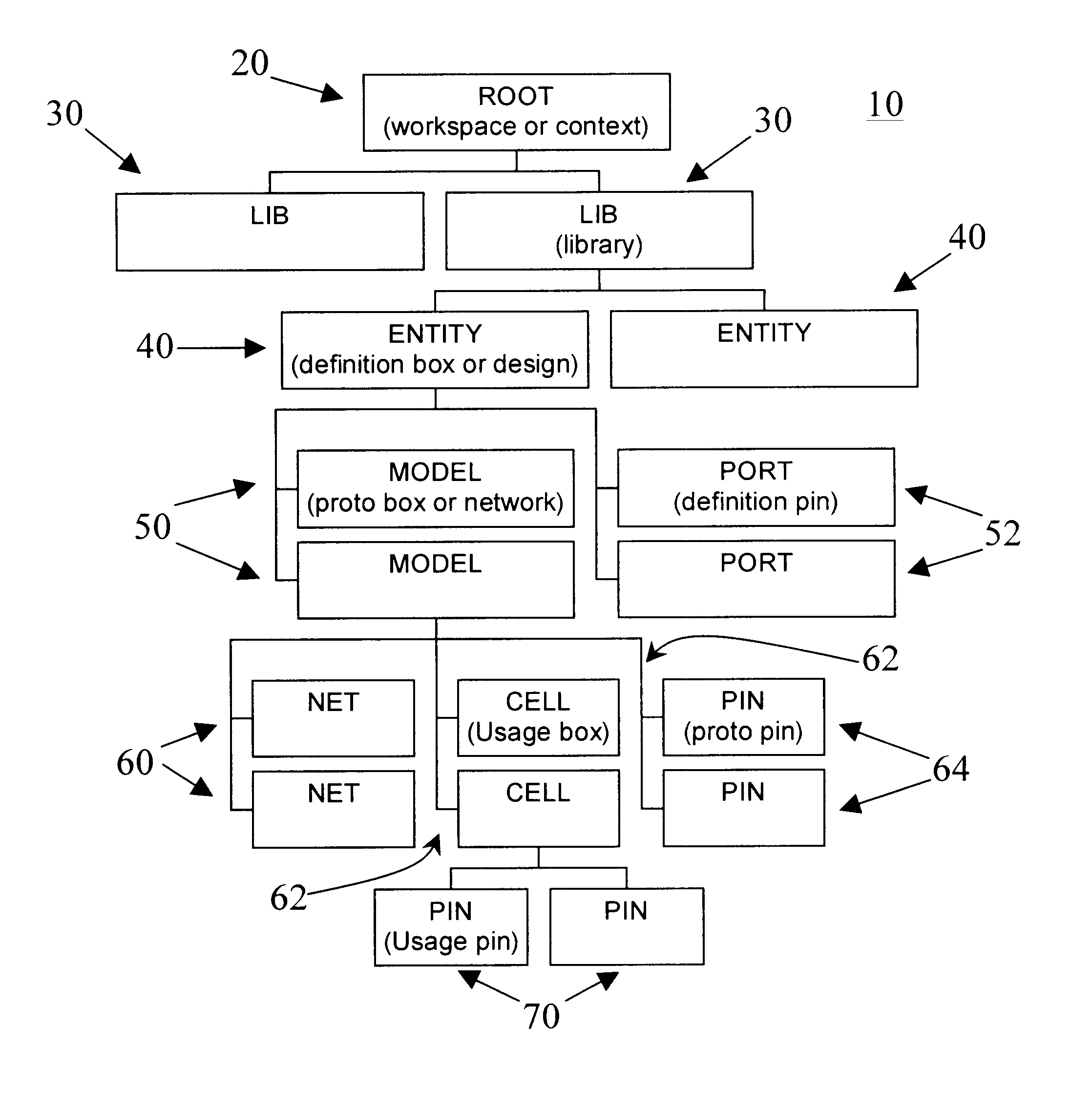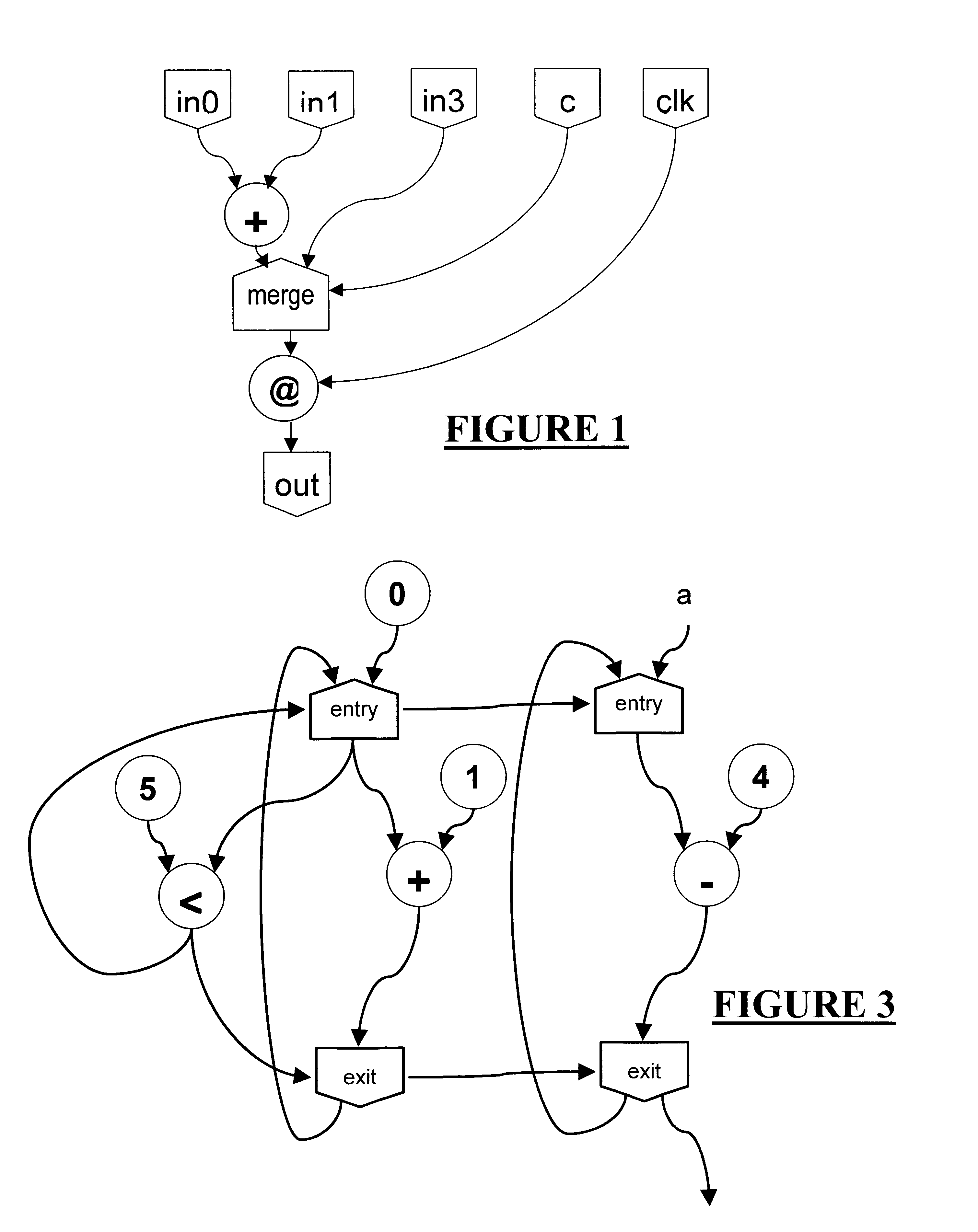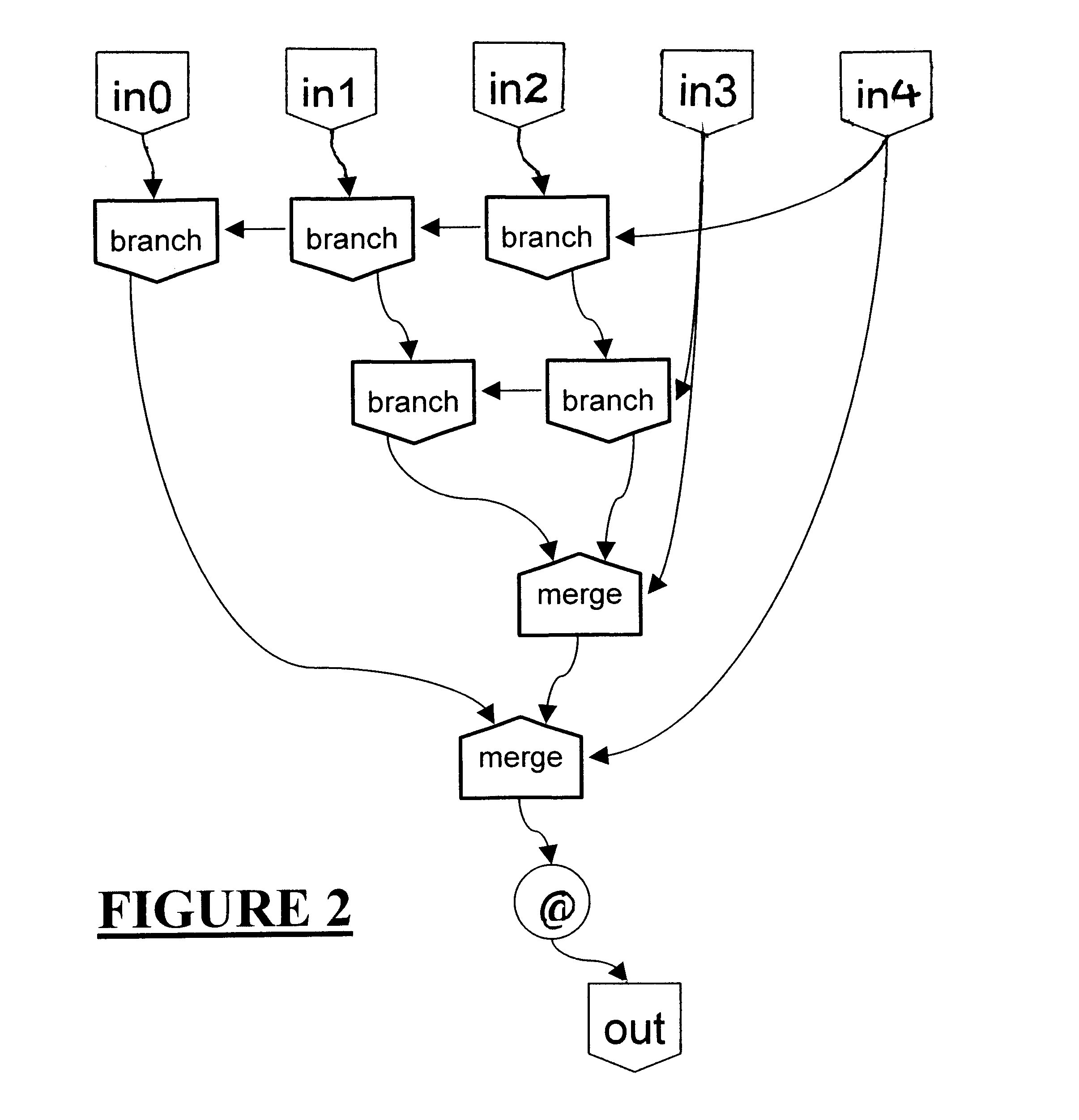Method for storing multiple levels of design data in a common database
a technology of logic design and database, applied in the field of digital logic design systems, can solve the problems of time-consuming and processor-intensive, improper connection or placement of physical items by designers within one or more cells,
- Summary
- Abstract
- Description
- Claims
- Application Information
AI Technical Summary
Benefits of technology
Problems solved by technology
Method used
Image
Examples
Embodiment Construction
First, given a Verilog description of a circuit to be developed, the Verilog must be parsed to generate a data flow graph suitable for implementation in the data model. RTL parsers known in the art are preferably used for this purpose. The output from the RTL parser is a Verilog parse tree which is used to generate the data flow graph. Although well-known in the art, the structure of the parse tree is relatively complicated and, since detailed knowledge of it is not necessary for an understanding of the present invention, further description of the parse tree will be omitted for simplicity and brevity.
FIG. 1 shows an example of translation of the Verilog source code
always @(posedge clk)
begin
out=in1+in2;
if (c)
out=in3;
end
into data flow elements. Here, in0, in1, in2, c and clk are input ports of an Entity (described below) and out is an output port of the Entity. An adder (an example of a Cell as described bellow) adds the values at Ports in0 and in1 and supplies the result to a merge ...
PUM
 Login to View More
Login to View More Abstract
Description
Claims
Application Information
 Login to View More
Login to View More - R&D
- Intellectual Property
- Life Sciences
- Materials
- Tech Scout
- Unparalleled Data Quality
- Higher Quality Content
- 60% Fewer Hallucinations
Browse by: Latest US Patents, China's latest patents, Technical Efficacy Thesaurus, Application Domain, Technology Topic, Popular Technical Reports.
© 2025 PatSnap. All rights reserved.Legal|Privacy policy|Modern Slavery Act Transparency Statement|Sitemap|About US| Contact US: help@patsnap.com



